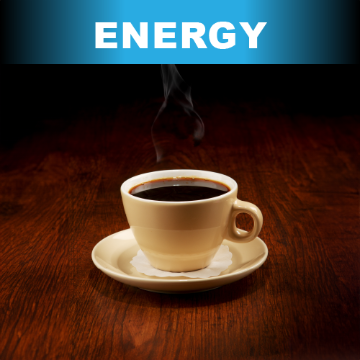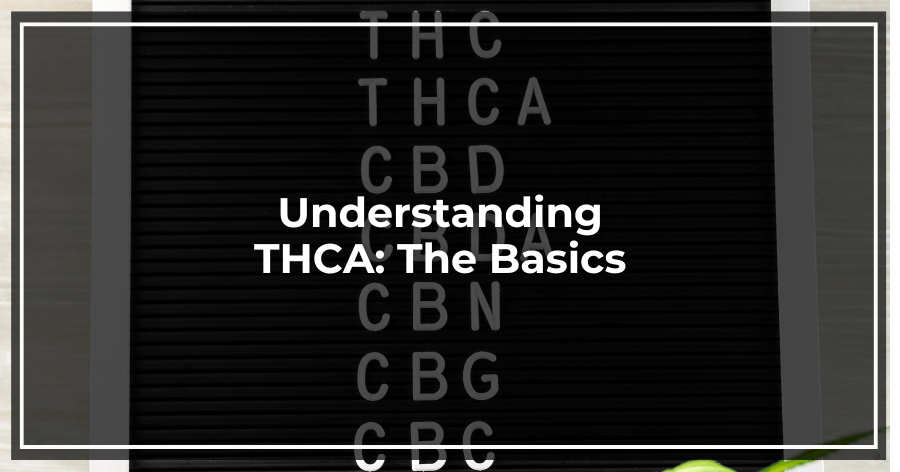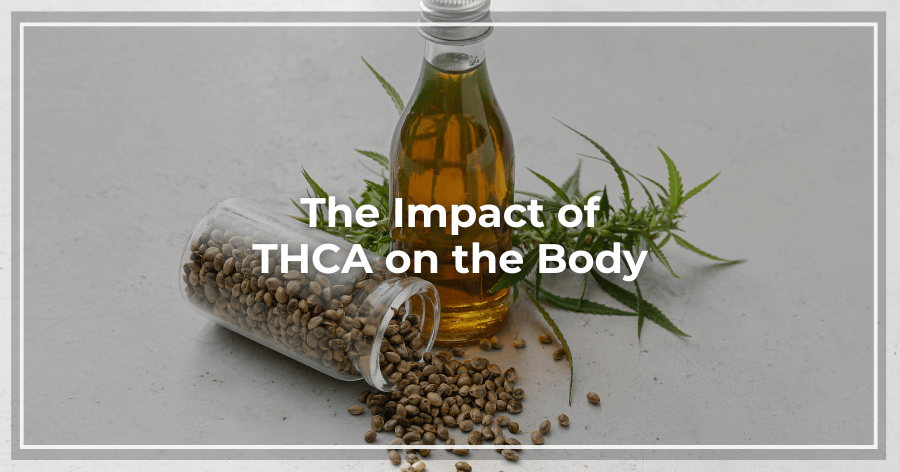Are you wondering what impact THCA has on your body and if it can influence your stress levels?
Delve into the heart of this matter by examining how THCA available in our THC Products (a non-psychoactive compound in its raw form) transforms upon heating—a process familiar to anyone with experience in baking or cannabis consumption.
This article cuts through the jargon, presenting research-based insights into THCA’s effects and its legal status as a controlled substance.
Discover how understanding THCA could benefit your wellness routine, quell uncertainties, and provide clarity on its potential high. For more related articles, check out our blog.
Understanding THCA: The Basics
At the heart of cannabis lies Tetrahydrocannabinolic Acid (THCA), a precursor cannabinoid with a distinct chemical structure.
Unlike its well-known counterpart THC, THCA is non-psychoactive, which contradicts the common association with intoxication and addiction.
Within the plant, THCA is produced through biosynthesis, which transforms it into THC when exposed to heat or light—a process well worth understanding.
This primer will unpack the nuances between THCA and THC, delve into their production in cannabis, and discuss the implications on drug testing.
What Is Tetrahydrocannabinolic Acid?
Tetrahydrocannabinolic acid (THCA), commonly referred to as THCA, is the non-psychoactive precursor found in the raw cannabis plant. In the absence of heat, THCA maintains its form, evading the psychoactive effects that the United States federally regulates.
Residing naturally in the trichomes of the cannabis flower, THCA has garnered attention for its perceived therapeutic benefits, particularly its potential to alleviate symptoms like nausea and vomiting without altering the user’s mental state. Learn more about our CBD THC products that contain THCA in its raw form.
When cannabis is heated, as in the process of baking or using an oven, THCA undergoes a transformation known as decarboxylation.
This chemical reaction strips away a carboxyl group, effectively converting THCA into THC, the principal psychoactive component responsible for altering perception.
This understanding is vital for individuals seeking the plant’s benefits without the high, guiding them toward products that preserve THCA’s raw form and align with their wellness goals.
How THCA Is Produced in Cannabis Plants
In the verdant foliage of cannabis plants, THCA is synthesized through a natural process that underpins the plant’s defense mechanism and growth.
Specifically, THCA is a byproduct of the plant’s efforts to defend itself against disease and environmental stress, also playing a role in fostering the immune system.
This knowledge reassures those inquiring, “does THCA get you high,” with a clear negation, highlighting its existence as a non-intoxicating compound that addresses therapeutic needs without impacting mental health.
The production of THCA in cannabis is not just a fascinating botanical occurrence but also a beacon for therapy seekers.
Our About Us page provides insights into how we harness this natural process for wellness.
As a precursor to THC, THCA harbors potential analgesic properties, making it a subject of interest for alleviating pain without cognitive side effects.
This understanding is pivotal for individuals turning to cannabis for health benefits, guiding them toward informed choices about their therapy options that align with their personal health trajectories.
THCA vs. THC: Key Differences
THCA and THC may share molecular lineage, but they hold distinct places on the spectrum of cannabis effects.
THC, upon binding with CB1 receptors in the brain, can trigger a sense of euphoria as well as discomforts like paranoia, owing to its psychoactive nature.
In contrast, THCA, the non-psychoactive precursor molecule, doesn’t interact with the brain’s receptors in the same manner; thus, it doesn’t produce a ‘high.’
This critical difference assures users that THCA can be incorporated into daily routines without impairing cognitive abilities.
The interaction with the body’s endocannabinoid system sets these two compounds apart.
While THC directly influences the brain’s receptors to profound effect, THCA primarily focuses on the peripheral receptors, potentially offering benefits such as reducing inflammation or relieving pain.
This knowledge is especially relevant for those seeking therapeutic benefits from cannabis without the risk of psychoactive side effects.
Hence, individuals sensitive to THC’s effects can use THCA as a therapeutic alternative, avoiding unwanted cerebral impacts while still harnessing the plant’s potential health benefits.
Does THCA Get You High?
Amidst curiosities surrounding Tetrahydrocannabinolic Acid (THCA), a key question arises: does consuming THCA lead to psychoactive experiences?
This section scrutinizes THCA’s psychoactive properties, examines how decarboxylation activates the compound, and compares the effects of raw versus heated consumption on the central nervous system.
Understanding these dynamics offers insight into THCA’s potential to alleviate nausea without a high, emphasizing the importance for those interested in its therapeutic use over conventional drug experiences or concentrates that may alter taste and sensation.
THCA’s Psychoactive Properties Examined
Investigations by the Food and Drug Administration (FDA) and other researchers confirm that THCA alone does not cause intoxication.
Since this cannabinoid does not readily bind to the brain’s cannabinoid receptor CB1, it lacks the hallmark psychoactive effect associated with THC.
In its natural state, prior to the application of heat or ultraviolet light, THCA offers relaxation and benefits via the endocannabinoid system without impairing cognitive function or leading to the characteristic ‘high’ associated with cannabis use.
People managing disease symptoms often seek alternatives that do not alter their mental state.
In this context, THCA emerges as a crucial component in cannabis that meets this need.
It functions within the endocannabinoid system in ways that could promote homeostasis and alleviate discomfort without engaging the cannabinoid receptor in a manner that induces euphoria, further distinguishing it from its psychoactive counterpart THC.
This represents a significant development for patients who prioritize maintaining clarity while addressing their medical conditions.
The Role of Decarboxylation in Activation
Decarboxylation serves as the chemical gateway transforming THCA into THC, engaging with the body’s receptors to induce sensations such as euphoria and appetite stimulation.
This process is integral for those seeking pain management through cannabis, as only through the decarboxylation of THCA can the body’s CB1 receptors be activated, allowing for its potent anti-inflammatory and pain-relieving effects.
In practical terms, simple actions such as baking cannabis-infused butter triggers decarboxylation, converting THCA into the THC that provides relief and potentially enriches appetite.
It is this very activation through heat that steers THCA away from being a non-euphoric compound to one that can deliver the full spectrum of effects associated with cannabis, including euphoria and substantial inflammation reduction.
Raw Consumption Versus Heated Consumption
When THCA is consumed raw, such as in fresh leaves or tinctures, it avoids the psychoactive effects that heat-induced decarboxylation brings.
This means methods like sublingual administration or juicing fresh leaves preserve the compound’s non-intoxicating properties while potentially offering wellness benefits.
Unlike the process of cooking, which can transform THCA into THC and subsequently lead to a high, raw consumption keeps the compound in its original state, free from risks like smoke inhalation and the ensuing concerns about cancer and contamination.
Heated consumption of THCA, through methods like smoking or baking it into edibles, activates its psychoactive potential due to the heat causing decarboxylation.
For individuals managing conditions that may benefit from THC’s properties, understanding the distinct impact of heating THCA becomes crucial.
It is the key to harnessing the compound’s therapeutic value without unintended psychoactive effects, thus guiding decisions on consumption that prioritize health and efficacy.
The Impact of THCA on the Body
Interactions With the Endocannabinoid System
THCA’s impact on the endocannabinoid system—a complex network contributing to regulating mood and overall health—can be profound without crossing into psychoactive territory.
These interactions stimulate a chemical reaction within the nervous system’s peripheral parts, yet do not replicate the high traditionally linked to THC.
For patients on the lookout for cannabis-based medication, this points to an avenue for relief, sidestepping the risk of altering mental states.
One intriguing aspect of THCA is its role in potentially modulating the endocannabinoid system to sustain a balanced state, thereby nurturing one’s well-being.
Since it doesn’t directly bind with the central nervous system’s receptors, it presents a gentle, non-disruptive influence on health, making it an attractive focus for medical research and patient consideration amidst a spectrum of available cannabis therapies.
What Makes Big Budz CBD Unique
At Big Budz CBD, we pride ourselves on being a trusted source of high-quality cannabinoid information and products.
Our commitment to transparency, education, and product quality is what sets us apart from the rest.
We focus on delivering premium cannabinoid products, backed by rigorous testing and research.
Our dedication to educating consumers is reflected in our extensive blog, where we provide research-driven articles and updates on the latest cannabinoid science.
By choosing Big Budz CBD, you’re accessing not only effective products but also reliable information to guide your wellness journey.
We invite you to explore our About Us page to learn more about our mission, values, and the passion that drives us to make a positive impact in the cannabis industry.
The impact of THCA on the body is a fascinating exploration of nature’s complexity.
Engaging primarily with the endocannabinoid system, THCA touts a profile rich in potential health benefits, ranging from pain relief to anti-inflammatory effects.
We’ll examine how it interacts at a molecular level, its efficacy without the psychoactive effects of tetrahydrocannabinol, and the safety considerations, including any side effects.
Particular focus will be given to understanding THCA’s potency, its interaction with terpenes—the aromatic compounds in cannabis—and considerations regarding its presence in urine tests.
This clear view directly connects to the following discussions on the detailed workings of THCA within the body.



























